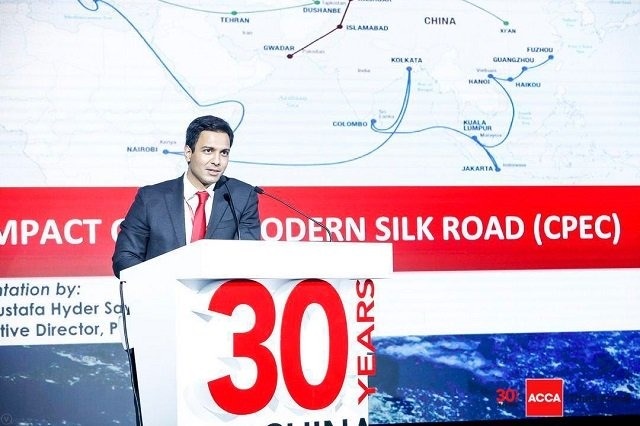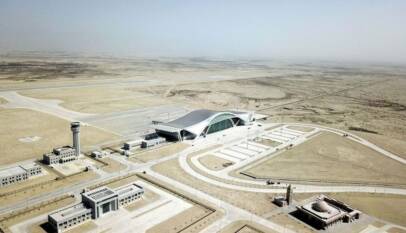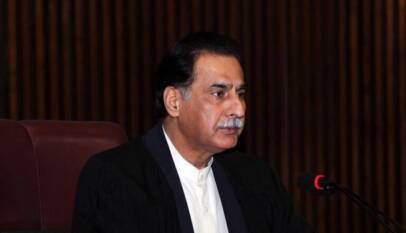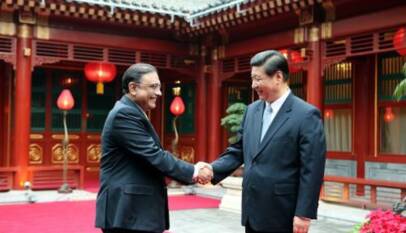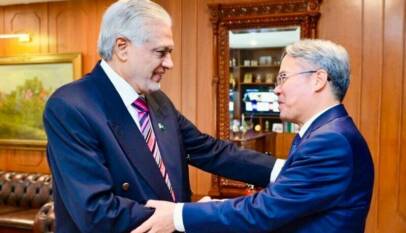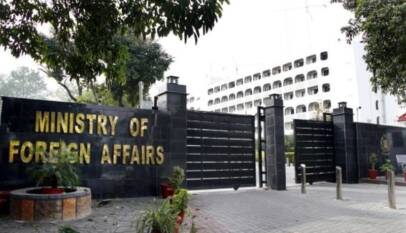Pakistan’s pivot to ‘economic diplomacy’ should begin with China, says Mustafa Hyder Sayed
Mustafa Hyder Sayed, Executive Director of Pakistan China Institute writes on the occasion of 70th anniversary for the formal establishment of Pakistan-China relations. He writes that Pakistan has always supported China unconditionally and China has been Pakistan’s biggest supporter in the UNSC. Sayed labels CPEC investment as China’s vote of confidence for the Pakistan economy and highlights that since the formal signing of CPEC, Pakistan has received investment in various sectors, especially in SEZs. He concludes by saying that GoP’s pivot to economic diplomacy should begin with China, which is the world’s biggest market, and this can only be done through coordinated efforts of all concerned groups such as government agencies, business councils, relevant ministries and think tanks.
Pakistan and China will today – May 21 – celebrate 70 years of what has been a model bilateral relationship. The Pakistan-China relationship has been re-enforced by a consistent policy of Pakistan towards China, regardless of who is in power, supporting China on its key international issues and core interests such as Taiwan, Tibet, Xinjiang, Hong Kong and South China Sea.
Similarly, China has been Pakistan’s voice in the Security Council, supporting Pakistan’s position on Indian Occupied Kashmir, as well as on Pakistan’s fight against terrorism, core interests in Afghanistan, and more recently in the fight against the Covid-19 pandemic.
By making CPEC the flagship project of the BRI, China gave a vote of confidence in Pakistan’s economy by investing a mammoth $62 billion. While there is much to celebrate in the ‘all-weather friendship’ between the two countries, it is also an opportune moment to pause and reflect on how this relationship can be optimized, and how the next decades should (or could) look like for Pakistan.
Since the start of CPEC in 2013, Pakistan has received investments in roads, energy, the Gwadar Port – as well as grants in the socio-economic sphere that involve clean water, vocational training institutes and hospitals. Moving forward, Pakistan should use CPEC as an opportunity to: i) undertake ‘targeted’ poverty alleviation using China’s experience and expertise; ii) make the CPEC’s Rashakai and Allama Iqbal SEZs in Khyber Pakhtunkhwa and Faisalabad, respectively, a resounding success by courting top Chinese manufacturers looking to relocate their industry to consider both; and iii) negotiate and prepare for better market access to China whose economy is now 18.34 percent of Global Gross Domestic Product.
Pakistan’s youth bulge is ballooning, with 65 percent of our approximately 220 million population under the age of 35. As per some estimates, the Covid-19 pandemic has brought 87 million into poverty. ‘Targeted’ Poverty Alleviation, popularly known in China as Jin Zhun Fu Pin, identifies poverty-stricken villages, conceives appropriate projects mostly related to housing and infrastructure, and proceeds with efficient implementation of the same. The strategy also involves identifying, more specifically, what are called “poverty households”, which are essentially poor households without any special policies or subsidies being catered to them. Pakistan’s Ehsaas Programme should engage and work with China’s State Council Leading Group Office of Poverty Alleviation and Development to create a five-year plan for Pakistan’s ‘Targeted’ Poverty Alleviation Strategy.
The Rashakai SEZ has received 1,998 applications for industrial plots, while companies such as Century Steel of China are in the process of relocating to Rashakai; the company had requested the State Bank of Pakistan to provide approval for import of machinery from its parent company in China, which was later given. The issue of exemption of custom duty for import machinery has still not been finalized, which would be a crucial incentive for investors. As of now, this policy will be applied on a case-to-case basis, not as a uniform policy for all investors wishing to invest in these SEZs.
When China created SEZs, some of them took off, and some of them did not. For example, in 1979-80, the SEZ established in Xiamen’s Fujian province was more successful than that established in 1985 in Hainan. It is important for Pakistan to understand that the governance of SEZs is a nuanced exercise, and cannot be done by a government official or a locally recruited management professional; the entity or individual that governs the SEZ must have prior experience in SEZ governance.
While the Board of Investment and its affiliated agencies have given incentives for foreign investors, we still do not have an actual one-window where investors can receive a one-stop shop solution. We also must understand that Pakistan is one of many countries competing for investment from top Chinese companies that are looking to relocate manufacturing bases to countries with lower costs of production. Apart from being an ‘all weather friend’ of China, what commercial competitive advantages do we offer that, for example, Bangladesh or Cambodia cannot match? We must make sure that these SEZs, like any lucrative land, do not become trading/speculative grounds of prime real estate, which may make money for local companies, but would make the concept of an SEZ futile.
After the signing of the China-Pakistan Free Trade Agreement II, Pakistani exporters have more access to the $2 trillion Chinese market. Nearly 40 percent of the CPFA II products that China imports have seen lowering of tariff barriers, 401 Pakistani products for which there is a market in China can now be exported to China. In total, 724 Pakistani products have zero import duties in China. However, Pakistan’s export volume to China in 2020’s fiscal year was all of $1.87 billion. China has lowered its tariff barriers for 603 out of the 1,436 products listed in Priority Products II of the CPFTA II, which are lower than that extended to the likes of Japan, South Korea, US, Australia and Germany for the same products.
The government’s pivot to ‘economic diplomacy’ should begin with China, which is the world’s biggest market and ,fortunately for Pakistan, a neighbor and close partner. The opportunity that China presents to Pakistan has to be addressed through a collective and coordinated effort and action of business groups like the Pakistan Business Council, relevant government agencies such as the Ministry of Commerce and CPEC Authority, and think-tanks. This is a good opportunity to prove wrong the idea that: ‘Pakistan never misses an opportunity to miss an opportunity’.
Chinese Ambassador highlights significance of Third Plenary Session for China-Pakistan cooperation
The Third Plenary Session of the 20th Central Committee of the Communist Party of China ha…



